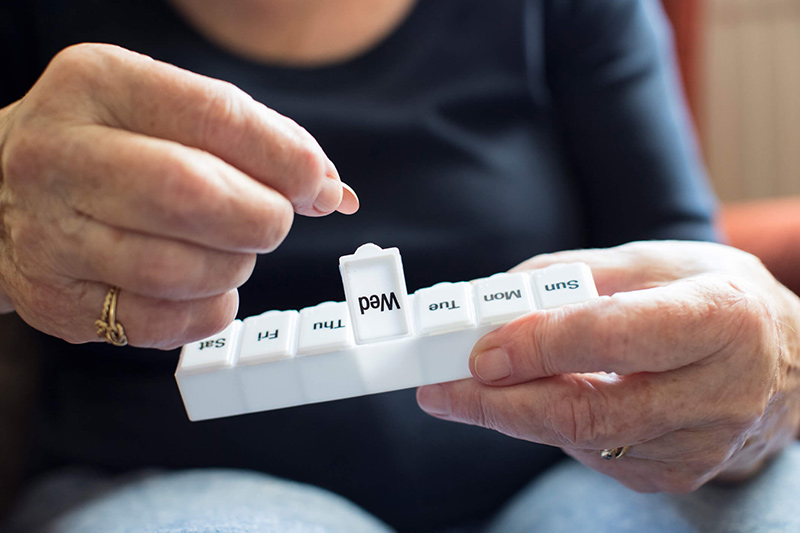Prevention and Treatment of Venous Thromboembolism

How can venous thromboembolism (VTE) be prevented?
Be proactive. Ask for a risk assessment for VTE if you are admitted to the hospital or are having surgery. Learn to recognize the warning signs of a dangerous blood clot and speak up if anything concerns you.
VTEs often are preventable, with strategies that stop the development of clots in people "at-risk." Health care professionals determine risk by gathering information about a person’ age, weight, medical history, medications and lifestyle factors.
Those at risk may take anti-clotting, or blood-thinning, medications or use mechanical devices such as compression stockings or compression devices. Getting out of bed quickly after surgery is also advised if possible.
After surgery or hospitalization
- Keep moving. Move around when you are able to or as encouraged by your health care professional.
- Consider compression. Use graduated compression stockings or massaging compression devices if recommended by your health care professional.
- Take prescribed medication. If you have a high risk of a blood clot and a low risk of bleeding, a low-dose, “blood-thinning” medicine may help.
Traveling and blood clots
- Perform simple exercises. Flex and extend the ankles and knees and contract the calf muscles at regular intervals.
- Walk around. Get up and walk while traveling every hour.
- Consider compression. Wear compression socks during your travel.
- Change positions while seated and avoid crossing your legs.
- Avoid alcohol and hydrate with water.
How is VTE treated?
VTE includes deep vein thrombosis (DVT), when a blood clot forms in a deep vein, usually in the leg. And it includes pulmonary embolism (PE), when the clot breaks off and travels from the leg up to the lungs.
DVT and PE are serious, life-threatening conditions that require immediate medical attention. Early diagnosis and treatment can often lead to recovery, but long-term complications may occur.
Treatment usually includes blood-thinning medication to keep clots from continuing to form, and sometimes strong clot busters to actually break up clots. Options include:
- Anticoagulants, including injectables such as heparin or low molecular weight heparin, or tablets such as apixaban, betrixaban, dabigatran, rivaroxaban, edoxaban and warfarin (also called direct-acting oral anticoagulants or DOACs). These medications are used for a number of months. If the VTE occurred after a provoking factor like surgery, trauma, pregnancy, hospital stay or with use of hormone treatments, this is usually given for a number of months. For patients without these factors, treatment can be recommended for longer periods.
- Thrombolytic therapy, which includes drugs such as a tissue plasminogen activator (tPA), a clot-dissolving enzyme may be used in some cases. This can be given through an arm vein or by inserting catheters directly into the blood clot in the vein or lung. Thrombolytic therapy is generally used for people with PE presenting with low blood pressure or in severe cases of DVT.
Surgical procedures may also be used. A surgical thrombectomy, a procedure for removing a large blood clot from the vein or injecting clot-busting medicines into the vein or lung artery, may be performed. In rare cases, surgery may involve placing a filter in the body's largest vein, the inferior vena cava, to prevent blood clots from traveling to the lungs. Anticoagulant therapy generally will be the first line of treatment with thrombolytic or surgery occurring in rare instances.





